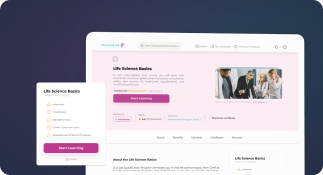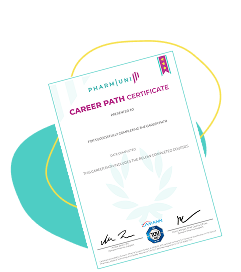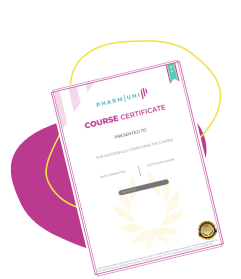The pharmaceutical and medtech industries operate under strict rules. Among the most essential frameworks are the ICH guidelines. These global standards ensure the safety, efficacy, and quality of healthcare products. Regulatory professionals, clinical researchers, and compliance officers rely on them daily.
So why should you care about ICH guidelines? Because understanding them means you can confidently support submissions, meet regulatory expectations, and help bring safe products to market faster.
In this guide, you’ll learn what ICH guidelines are, how they evolved, their key categories, and how to apply them effectively. Let’s dive in.

What Does ICH Stand For, and How Did It Begin?
The term ICH stands for the International Council for Harmonisation of Technical Requirements for Pharmaceuticals for Human Use. This organization launched in 1990 to reduce redundant testing, align technical requirements, and create unified global standards.
ICH guidelines began as a collaborative effort among regulatory agencies like the FDA (U.S.), EMA (Europe), and PMDA (Japan).
Initially, they targeted discrepancies in clinical and quality data. Today, they cover a wide range of technical fields — from clinical trials to digital submissions.
These guidelines play a crucial role in regulatory affairs.
They promote efficiency, eliminate duplicative efforts, and improve safety across all product development phases. Understanding them is essential if you aim to work in a global regulatory role.
Sign up for Introduction to Regulatory Affairs - Roles and Responsibilities Course
7 Main Categories Explained in ICH Guidelines
Clinical Efficacy & Trial Conduct
These include ICH E6 — Good Clinical Practice, E9(R1) for estimands, and E3 for clinical reports.
Population & Data Diversity
ICH E5, E7, and E11 address patient diversity, elderly populations, and pediatric studies.
Safety & Pharmacovigilance
Guidelines such as E2A, E19, and E2B(R3) focus on timely and accurate safety reporting.
Quality & Chemistry
From Q1 stability testing to Q10 pharmaceutical quality systems, this section ensures product consistency.
Nonclinical & Toxicology
ICH M3, S6, S7, and S8 help evaluate drug safety in lab and animal testing.
How to Follow ICH Guidelines in Daily Regulatory Practice?
Key Procedures You Must Know
Understanding the ICH E6 Good Clinical Practice guideline helps you design ethical trials.
It outlines the responsibilities of investigators, sponsors, and monitors.
ICH E2A teaches expedited safety reporting, while E2B(R3) covers digital ICSRs.
These procedures protect patient safety and ensure timely reporting.
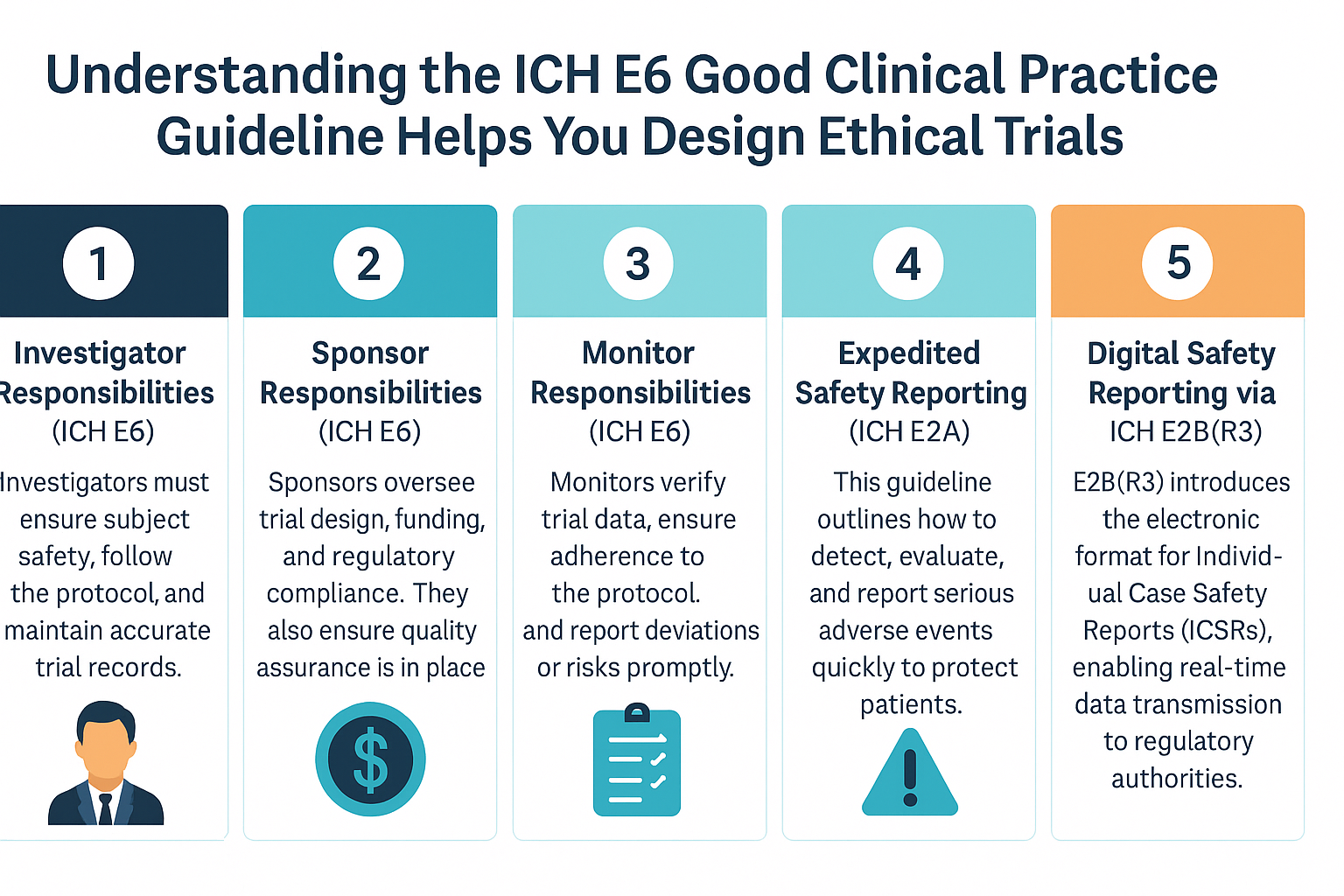
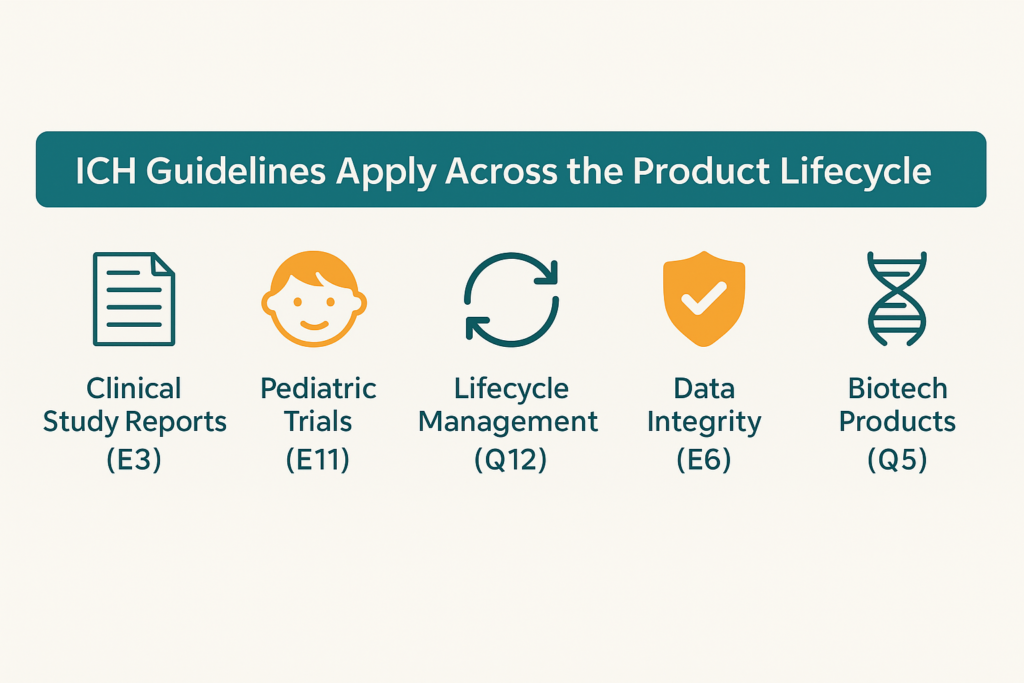
Where Do These Guidelines Apply?
ICH guidelines apply to nearly every step of the product lifecycle.
Whether you’re drafting a clinical study report (E3), ensuring data integrity during pediatric trials (E11), or managing lifecycle changes (Q12), you’ll use ICH standards.
To learn how to apply these in your real-world role, explore our Introduction to Regulatory Affairs course.
It breaks down ICH principles into actionable skills.
5 Actionable Benefits of Using ICH Guidelines
Faster Product Approvals
You minimize back-and-forth with regulators.
Clear Regulatory Pathways
Especially for new drug applications or medical devices.
Stronger Audit Readiness
Auditors expect ICH-aligned documentation.
Increased Global Market Access
Harmonized data allows simultaneous submissions.
Better Team Alignment
Cross-functional teams use the same reference points.
What Are the Objectives Behind ICH Guidelines?
Align Global Standards
ICH eliminates conflicting regulatory requirements between countries, creating a unified global framework.
This harmonization reduces duplication in testing and documentation.
As a result, companies save time, lower costs, and bring therapies to patients faster.
Improve Product Quality and Safety
Whether it’s through Q8 Pharmaceutical Development or Q9 Risk Management, the ultimate goal is safety and efficacy.
Q8 focuses on designing quality into the product from the start using science-based approaches.
Meanwhile, Q9 helps identify and control risks throughout the lifecycle to ensure consistent product performance.
👉 Visit our Pharmaceutical Regulatory Affairs glossary for more insights.
What Are the Differences Between ICH Q8, Q9, and Q10?
Q8: Pharmaceutical Development
This guideline promotes Quality by Design (QbD). It encourages you to design quality into the product from the start.
It emphasizes a science-based approach, process understanding, and risk-based controls. When followed, it reduces batch failures and speeds up development.
Q9: Quality Risk Management
ICH Q9 introduces tools like FMEA and HACCP. These help you prioritize risk controls based on real data.
You use this to assess everything from raw materials to manufacturing deviations.
Q10: Pharmaceutical Quality System
This builds on Q8 and Q9. It ensures companies have a structured quality system for lifecycle management.
It applies across the supply chain and aligns with GMP and post-approval change processes.
Which ICH Guidelines Are Mandatory for Regulatory Submissions?
ICH E3 – Clinical Study Report Structure
Required in almost every submission dossier.
ICH Q1 – Stability Testing
Essential for shelf-life determination and post-approval monitoring.
ICH E6(R2) – GCP Addendum
Highlights electronic systems, monitoring plans, and risk-based quality management.
ICH Q12 – Lifecycle Management
Ensures regulatory flexibility for changes post-approval.
ICH M3 – Nonclinical Safety
Required for Investigational New Drug (IND) filings.
🔗 Stay updated on requirements via our Regulatory Pharmacy glossary.
Final Thoughts: Why ICH Guidelines Are a Must-Know
ICH guidelines are more than regulatory checklists. They’re frameworks that protect patients, streamline product development, and ensure international harmonization. Whether you’re working in QA, clinical operations, or regulatory affairs, they shape your decisions daily.
To work confidently in the pharmaceutical industry, you must understand and apply these guidelines. They help you manage risk, ensure safety, and communicate effectively with global regulators.
💡 Want to take the next step?
Explore more learning paths, glossary insights, and premium tools at Pharmuni.com
3 Quick CTAs Before You Go:

Ershad Moradi
Ershad Moradi, a Content Marketing Specialist at Zamann Pharma Support, brings 6 years of experience in the pharmaceutical industry. Specializing in pharmaceutical and medical technologies, Ershad is currently focused on expanding his knowledge in marketing and improving communication in the field. Outside of work, Ershad enjoys reading and attending industry related networks to stay up-to-date on the latest advancements. With a passion for continuous learning and growth, Ershad is always looking for new opportunities to enhance his skills and contribute to pharmaceutical industry. Connect with Ershad on Facebook for more information.

Pharmaceutical Marketing Jobs USA: High Demand Roles
Pharmaceutical marketing jobs in the USA are growing fast. From pharma brand manager to market access roles, professionals need strong digital, medical, regulatory, and strategy skills. Learn which jobs pay well, where remote roles exist, and how to land entry-level and senior roles fast.

From Applicant to Expert: Pharmacovigilance Vacancy Roadmap
Landing a pharmacovigilance job requires more than luck—it demands strategy, skills, and the right certifications. This roadmap explores vacancy types, compares drug safety roles, and shares actionable steps for applicants to grow into trusted experts in pharmacovigilance careers.
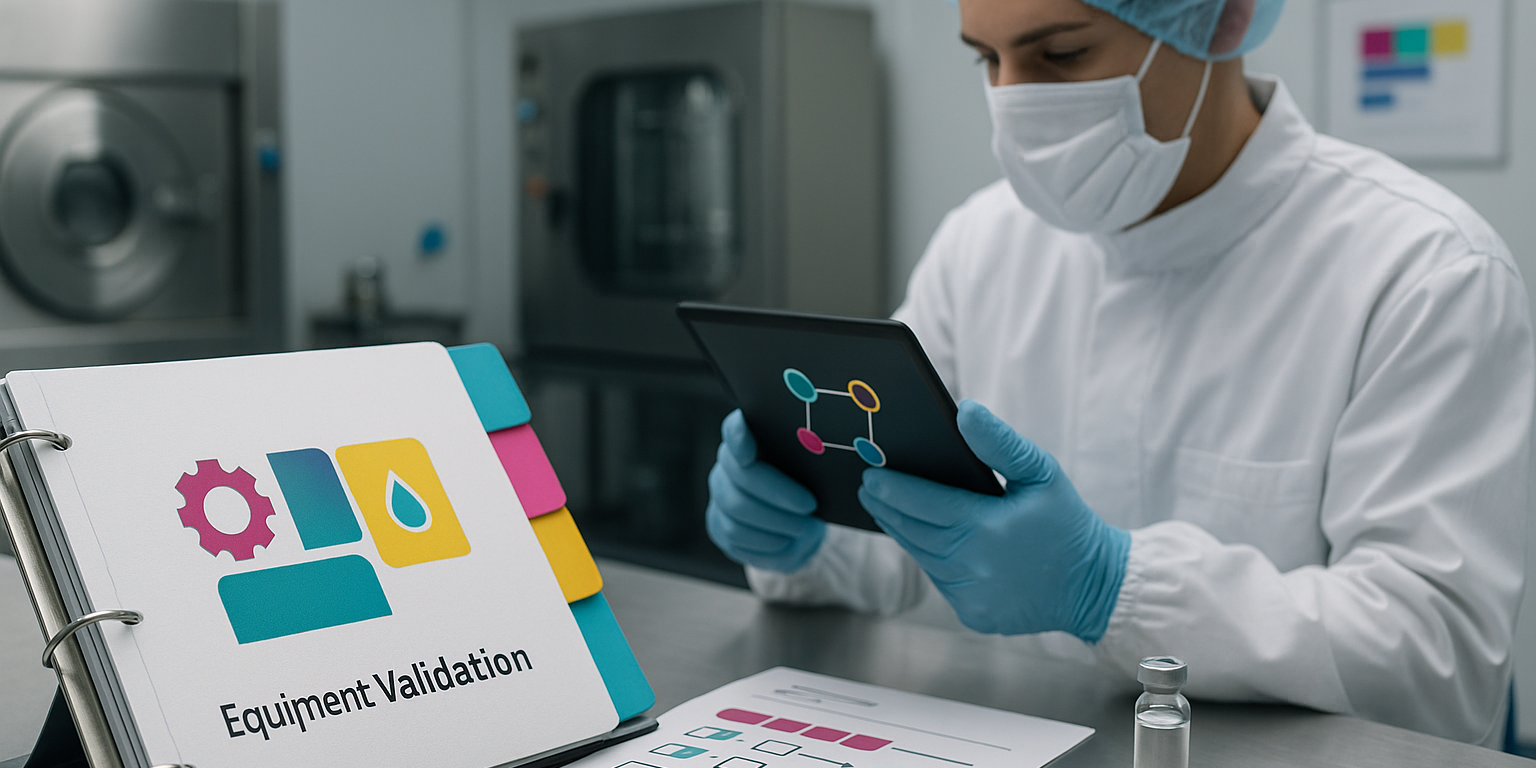
The Ultimate Equipment Validation Guide for 2026
Equipment validation remains vital for compliance in pharma and medtech. This ultimate guide explains IQ OQ PQ, cleaning validation, CSV, VMP, and new 2026 trends. Discover practical steps and compliance tips to stay audit-ready and career-strong.
